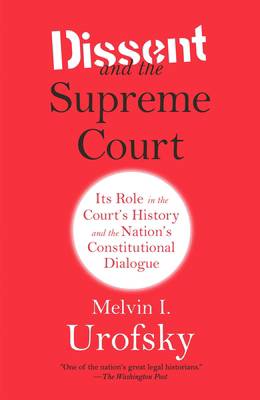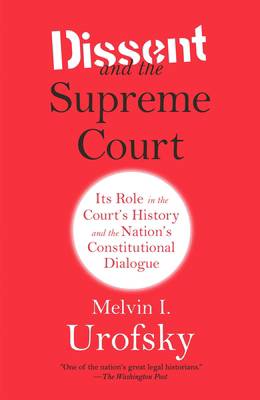
- Afhalen na 1 uur in een winkel met voorraad
- Gratis thuislevering in België vanaf € 30
- Ruim aanbod met 7 miljoen producten
- Afhalen na 1 uur in een winkel met voorraad
- Gratis thuislevering in België vanaf € 30
- Ruim aanbod met 7 miljoen producten
Zoeken
Dissent and the Supreme Court
Its Role in the Court's History and the Nation's Constitutional Dialogue
Melvin I Urofsky
Paperback | Engels
€ 25,45
+ 50 punten
Omschrijving
"Highly illuminating ... for anyone interested in the Constitution, the Supreme Court, and the American democracy, lawyer and layperson alike." --The Los Angeles Review of Books In his major work, acclaimed historian and judicial authority Melvin Urofsky examines the great dissents throughout the Court's long history. Constitutional dialogue is one of the ways in which we as a people reinvent and reinvigorate our democratic society. The Supreme Court has interpreted the meaning of the Constitution, acknowledged that the Court's majority opinions have not always been right, and initiated a critical discourse about what a particular decision should mean before fashioning subsequent decisions--largely through the power of dissent. Urofsky shows how the practice grew slowly but steadily, beginning with the infamous and now overturned case of Dred Scott v. Sandford (1857) during which Chief Justice Roger Taney's opinion upheld slavery and ending with the present age of incivility, in which reasoned dialogue seems less and less possible. Dissent on the court and off, Urofsky argues in this major work, has been a crucial ingredient in keeping the Constitution alive and must continue to be so.
Specificaties
Betrokkenen
- Auteur(s):
- Uitgeverij:
Inhoud
- Aantal bladzijden:
- 544
- Taal:
- Engels
Eigenschappen
- Productcode (EAN):
- 9780307741325
- Verschijningsdatum:
- 10/01/2017
- Uitvoering:
- Paperback
- Formaat:
- Trade paperback (VS)
- Afmetingen:
- 130 mm x 201 mm
- Gewicht:
- 476 g

Alleen bij Standaard Boekhandel
+ 50 punten op je klantenkaart van Standaard Boekhandel
Beoordelingen
We publiceren alleen reviews die voldoen aan de voorwaarden voor reviews. Bekijk onze voorwaarden voor reviews.











